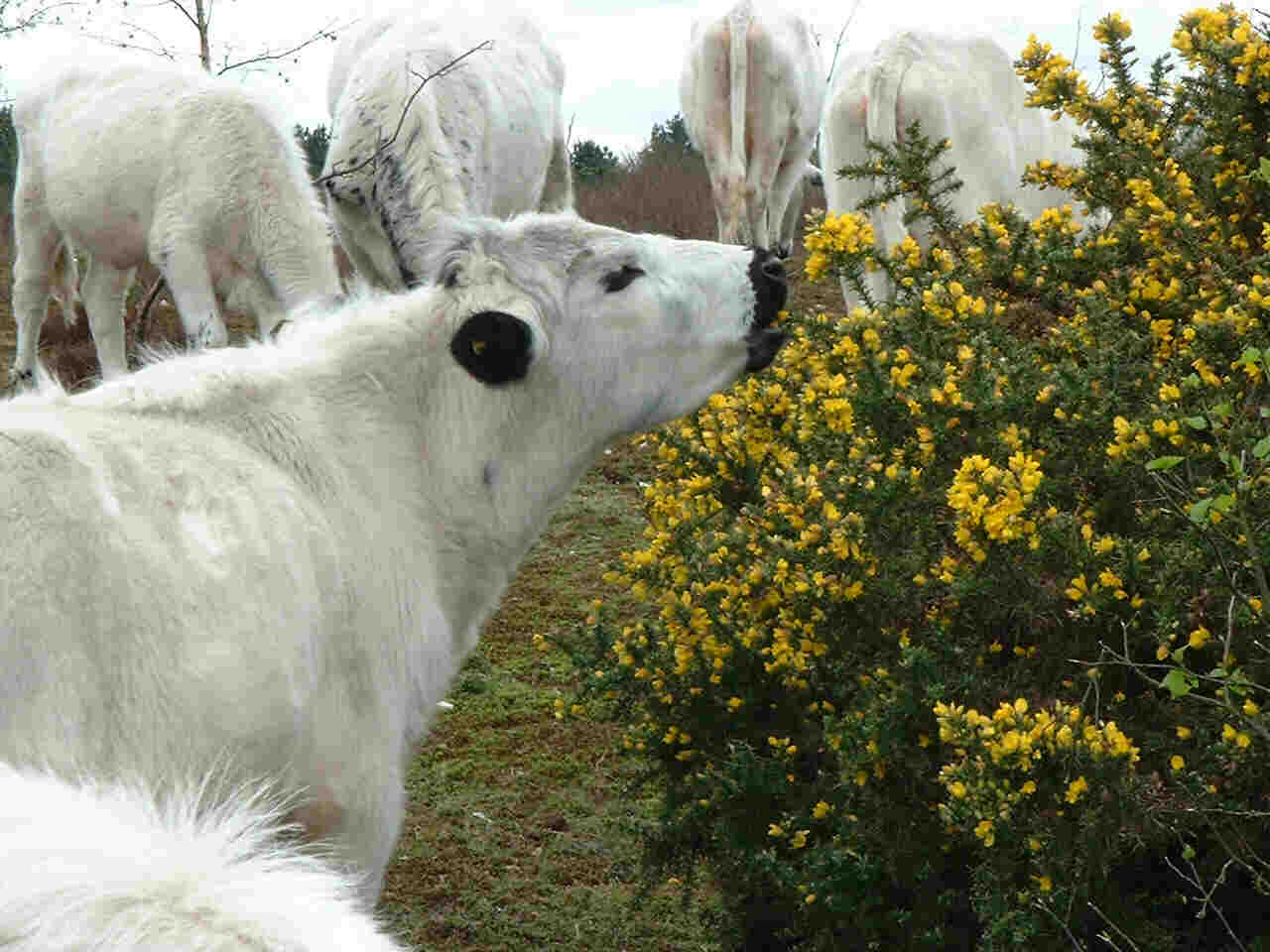 Conservation management
Conservation management Conservation management
Conservation management
Managing conservation land often involves a different approach to"normal" farming -- although your existing skills will be very useful. It's important to be clear about the objectives. The aim varies with habitat, but generally what's needed is a fairly short but tussocky sward. Scattered scrub is useful for birds and invertebrates, but extensive banks of gorse or thorn are unnecessary. Scrub and bracken may need physical or chemical clearance -- but the animals will clear a surprising amount, and it's usually best to get them on first and see what they leave. Using sheep, ponies or goats as well as cattle can be beneficial. (Photo: common gorse Ulex europaeus -- nutritious but uncomfortable)
A little poaching is OK -- and may even be a benefit (there are insects which live only in hoof-prints!). Natural grazing habitats are usually very low in nutrients, and artificial fertilisers can easily harm them. However, dung and urine from extensively grazed stock comes from the land itself -- they are recycling not importing. This is low-productivity land, and a few animals go a long way -- usually one livestock unit to two or more hectares.
Some conservationists worry about animals "eating the flowers", and want to avoid summer grazing. However, these habitats developed because of the way our ancestors used them, and would have been grazed (or mown for hay) during the growing season. Pasture plants are perennials which tolerate grazing very well -- grazing makes shorter flower spikes with fewer flowers, but one successful seed over the life of a plant is enough. If you don't summer-graze, scrub and coarse grass grow unchecked, smothering the smaller species.
Supplementary feeding on conservation sites can cause problems. It permits stocking at higher levels than the natural vegetation can support, it imports nutrients, and feeding sites can become heavily poached and dunged. However, if the animals are still eating forage they are also removing nutrients from the land, so there may be no net change in nutrient levels. A little judicious feeding of concentrates and mineral supplements can allow animals to eat large amounts of poor quality forage, especially during the site restoration phase.
Care needs to be taken with parasite treatments, as some come out in the dung and can kill valuable invertebrates (including, of course, dung beetles). Bolus treatments should be avoided, and drenches and pour-ons used sparingly. Ideally, treat animals well before they go on the land.
Remember that on SSSIs it is important to ensure that all management has been approved in writing by the relevant conservation body.
More conservation grazing index - Next page: Practicalities - Main index page
Page created with Wordperfect 8 and Notepad. Last updated: 28 November 2003. Please send comments to: comment@collingridge.net with the word "comment" in the subject line.